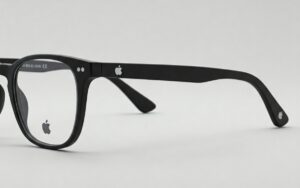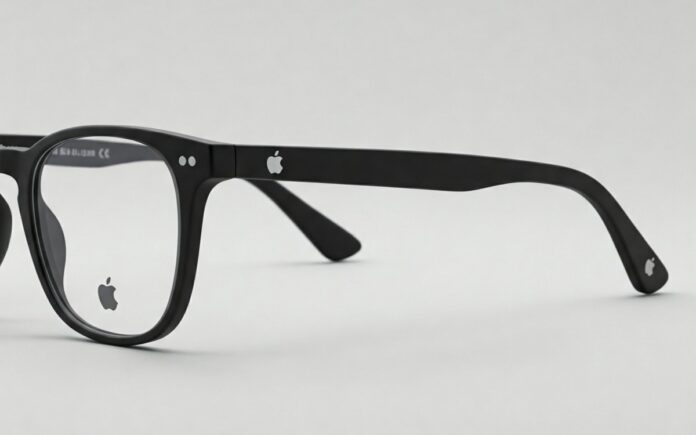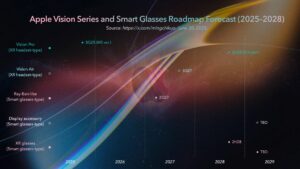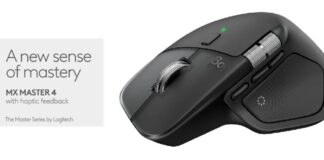A fresh roadmap projection for Apple’s Vision headsets and future smart glasses was released by analyst Ming-Chi Kuo. With at least four versions in development, Apple appears to be making a significant investment in the smart glasses market.
The first will be a rival to Ray-Ban Meta that has speakers, a voice-activated UI, AI functions, and the ability to record images and videos. According to Kuo, Apple is expected to reach 3–5 million unit shipments in 2027, with mass manufacturing set to begin in Q2.

The temples and frames of the first-generation Apple glasses will be available in a variety of material finishes. With the product category predicted to reach 10 million shipments in 2027, Apple’s initial foray into the smart glasses market is also anticipated to increase demand for the category across other companies.
Additionally, Apple is developing liquid crystal on silicon (LCoS) screens, voice commands, and gestures for extended reality (XR) glasses. In Q2 2028, they are anticipated to go into mass production.
Another “display accessory” pair of glasses that attach to an Apple device, such as the iPhone, is also mentioned by Kuo. These are currently on hold for refinement, as they were initially scheduled to enter mass production in Q2 2026.
Vision Series:
Later this year, additional variants of the Vision headset series will also be released, including an upgraded Vision Pro with the Apple M5 processor. It appears that mass production will start shortly, in Q3 (July–September), with a manufacturing run of 150,000–200,000 units anticipated.
Although it appears that Apple will not be releasing any new Vision devices in 2026, Kuo believes that at least three new headsets are in development and are expected to be released in 2027 and 2028.
With a lightweight form factor that is 40% lighter than the Vision Pro (600–650 grams), the Vision Air is anticipated to launch in Q3, 2027. To reduce weight, it will include a magnesium alloy frame, fewer sensors, plastic lenses, and an “iPhone-grade processor.” This variant is expected to have a lower starting price and is anticipated to gain popularity among customers.
With a new M-series processor, a lighter design, and a more affordable price tag, the second-generation Vision Pro is expected to enter commercial production in Q2 2028.







